17 Chatbot Use Cases to Understand How They Work
Do you have the best chatbot use cases at your fingertips? If the answer is no, you don’t even need to worry: now you have it in the palm of your hand.
Chatbots have general and specific uses, depending on your marketing strategies. They are very versatile and can be applied in various situations on your website: each of them with a personalized approach.
Here on the blog, we’ve already talked a lot about what a chatbot can offer you, in several different articles. This text seeks to bring together everything we’ve already talked about on the subject, showing you the true power of Conversational Marketing.
And at the end of the text, we’ll talk a little more about some very specific segments, so you can see some chatbot use cases in practice. There are success stories too!
Let’s dig in:
9 Chatbot use cases by features
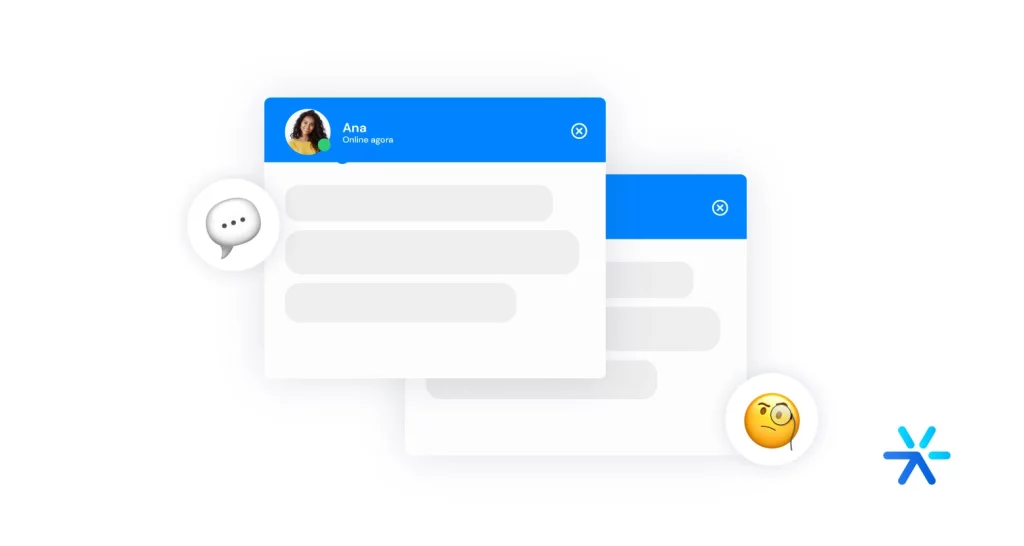
Before we start, can we talk a little more about what chatbots are?
The definition of a chatbot is simple: it is a virtual assistant based on text and prompts. But its uses are quite varied. There are chatbots for websites, for WhatsApp, for qualifying the lead that goes to WhatsApp, for support and service, etc.
This page you are reading now has an active chatbot, right there in the corner of the page. As we use our own chatbot on the Leadster website, it is an example of a chatbot to generate leads.
Defining a chatbot is like defining a chair: everyone knows what it is, but they come in different models. None cease to be a chair because they are different.
In the case of chatbots, each company can use it differently. But at the end of the day, they are all using the same technology and the same methodology: Conversational Marketing.
So, to explain what they are, we need to dive head first into the chatbot use cases. And that’s what we’re going to do now. All ready? 🤿
Lead Generation
Lead generation work is one of the most important in your marketing strategy, and at the same time one of the most expensive.
This cost is quite diluted across the various strategies, both in organic and paid media.
Lead generation is a never-ending job. You will always be looking for new ways to generate leads wherever and whenever you can.
Chatbots offer the possibility of creating personalized CTAs for any page on your website , individually or in bulk.
For example: the chatbot that is working on the page you are reading now has a specific CTA. Other pages will have other specific CTAs.
But just the possibility of having CTAs on any page on your website greatly increases lead generation. With this positioning and personalized approaches, we noticed an increase of up to 3x in the number of our leads and our customers.
The main uses of chatbot to convert leads are:
- Customized approaches for different pages;
- Different offers for different pages;
- Simplified data capture;
- Lead segmentation;
- Creation of Conversational Landing Pages.
Commercial Support
One of the most common use cases for chatbots is commercial support, or offering the right information to the right salesperson at the right time.
Many commercial contacts unfortunately end up not being developed due to late contact or an agent who is not 100% sure about the lead’s profile and their expectations regarding the company.
The process can also become complicated in companies that offer completely different services or products. A company that sells and maintains air conditioning, for example: normally, different people make the sales.
The chatbot on your website can perform pre-qualification and, through simple commercial intelligence settings, deliver the already semi-qualified lead to the salesperson responsible for the area.
And in cases where the commercial department is mixed — everyone sells a little bit of everything — the chatbot can put WhatsApp roulette into practice, sending pre-qualified leads to each salesperson at random.
Lead Qualification
Conducting Lead Qualification is a very important job but one that many people end up neglecting. Unfortunately, many Brazilian commercial departments care mainly about two things: email and telephone.
But commercial managers who apply conversational marketing to qualification soon find use cases for chatbots that are very relevant to the area, and end up not only increasing the number of sales, but also reducing the effort to make them.
Lead qualification is the process by which the Lead offers more and more information about themselves and their needs. With enough information, you can better understand what your pain points are and even whether you can help them.
For example: let’s look at two different leads — Josué and Marília. You know Josué’s phone number and email address. From Marília, you know where she works, the size of the company and what topics she is most interested in.
Who is it easier to sell to? To whom does the sale go faster? Of course for Marília.
This process is done in a chatbot replacing search forms or Landing Pages, with a simpler and more dynamic conversational approach.
Customized approaches
We need to talk a little more about personalized approaches in marketing , a concept that we even discussed throughout the text, but we haven’t delved into it in depth yet.
Personalized approaches increase lead conversion. This is because, through them, it is possible to deliver the right message to the right person at the right time.
Chatbots convert more precisely because of this. Let’s assume you have a residential maintenance services website — it’s husbanddealuguel.com.br. On this site, you have some texts about more advanced electrical maintenance.
While reading this text, you can configure a chatbot to say something like “Need to learn more about electronics? Download the free material!”
This material is more likely to be downloaded by your visitor due to the moment they are in and the research they are doing.
With a chatbot, you can create a personalized approach for each page on your website, for each text on your blog, for each lead magnet made available, increasing the number of leads exponentially.
Lead segmentation
Still on the subject of forms, many people work with them because they come bundled with marketing automation tools.
For example: many people use RD Station for marketing automation and lead segmentation, and it already comes with a Landing Page editor with forms.
Most marketing automation tools are like this. So, as we are already used to using them for other functions, we continue with the form.
The point is that chatbots themselves can also segment and organize leads. This is actually one of Leadster’s features.
At Leadster, all your leads generated via chatbot are saved and can be organized according to your own rules. It’s not necessary to export them to other platforms, but if you need to, it’s also entirely possible.
The segmentation of these leads is done in a very simple way, also within the system itself. You determine what response score your lead gives, based on your lead scoring work, and with a few clicks you can add this score.
What is happening in the GIF is the determination that a specific response from your lead to the chatbot will qualify them within a score of 0-5.
Then, in the future, you can filter your dashboard to display only the leads with the qualification you want to see, or send the already segmented leads to your CRM or automation tool
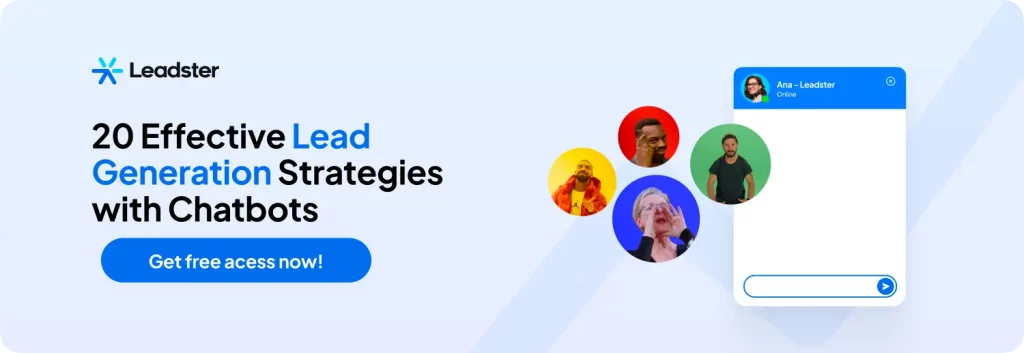
Integrations with marketing software and CRMs
A little more about these integrations because they are very, very important when choosing a chatbot.
Today, marketing agencies and in-house departments rarely use just one marketing tool. This is the example of RD Station from the previous topic: in our customer base, many use both the chatbot and the platform.
Because of this, there are several use cases in the integration between chatbots and marketing platforms, all of them specific and related to your strategies.
The most classic example is the integration of the two for greater organization of Leads, or related nutrition flows specifically for people who converted via chatbot.
The possibilities are countless and related to the type of application being integrated. Leadster has native integration with 18 platforms. Some of them are:
- SIRENA – Sends emails in Mollusco format to a Sirena system;
- ActiveCampaign – Send your leads to the Marketing tool;
- PipeRun – Send your leads to the CRM;
- Exact Sales – Send your leads to Exact Spotter;
- RDStation Marketing – Send your leads to the RD marketing platform;
- Hubspot – Send your leads to Hubspot Marketing;
- LAHAR – Send your leads to the LAHAR tool;
- FLEEG – Send your leads to the FLEEG tool;
- PRAEDIUM -Submit your leads to the PRAEDIUM tool.
Automatically schedule meetings
This is one of the most interesting chatbot use cases, but also one of the least talked about on the internet.
Here at Leadster, we integrate your team’s Google Calendar and, in bottom-of-the-funnel conversions or when the lead is qualified, the chatbot itself opens the seller’s calendar so that the lead can schedule a meeting.
This provides more agility in serving Leads that represent more chances of conversion, and also makes the work of commercial managers easier. It is possible to automatically distribute leads to your sales team directly through the platform.
Automatically generate CTAs with AI
This is a new feature here at Leadster and in Chatbots use cases in general. You already have support from ChatGPT to create CTAs in your conversation flows.
It works like this: when you activate the functionality, Leadster reads the top 10 pages on your website, based on the number of hits. The idea, explained in our webinar on the topic , is that the chatbot is like a visitor on your website.
Once the functionality is activated, it will read your website within 5 working days. After that, it offers you the possibility to create flows on these most read pages using ChatGPT — it suggests 5 different calls, from which you can choose one.
And these CTAs are personalized according to the page they will be on, increasing conversion into leads.
This functionality works in several chatbot use cases. Creating several flows at the same time, for example, drains anyone’s creativity very quickly 🥲
With the support of ChatGPT, the process becomes easier without losing creativity and relevance , as through Leadster he will read the pages and know what they are offering.
General view via Dashboard
To conclude, this is not exactly one of the use cases for chatbots, but viewing everything through an integrated dashboard makes all the difference in the uses we have mentioned so far.
At Leadster, the dashboard presents information such as the conversion rate, the number of leads, the number of flows, how many leads were generated, comparisons and much more.
Our dashboard even allows you to compare your conversion rate with that of your segment and others 😯
And with integrations with Google Analytics and Meta Ads, you can also track the performance of your ad campaigns and their respective conversions.
But not all chatbots are like this. Our case is a little different, because our product is a chatbot aimed at generating leads.
5 specific Chatbot use cases
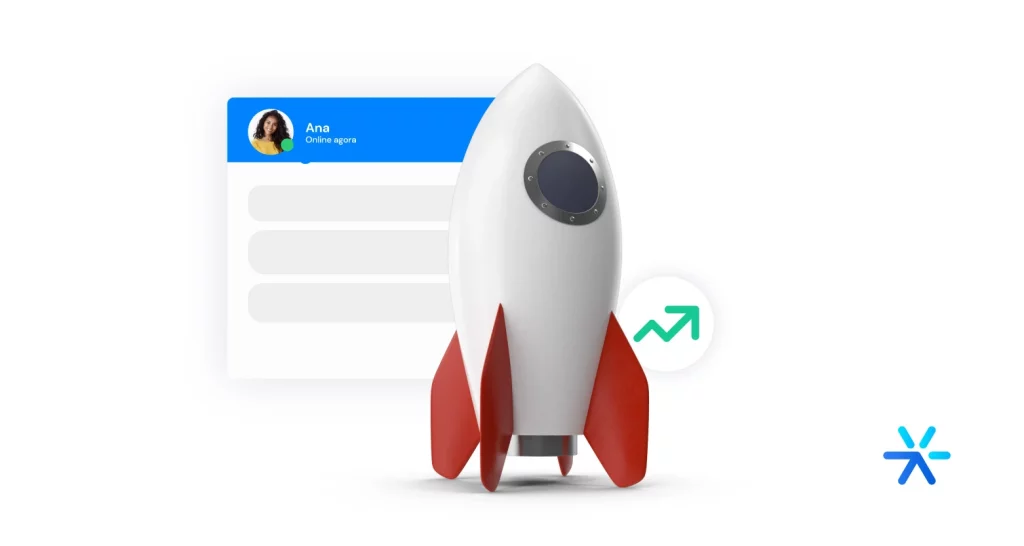
Well, now you know practically all the features of a chatbot. But what types of problems can they solve?
We mentioned some in the previous topic, but I think it’s a good idea for us to talk about more specific uses, those that really seek to solve a very specific problem in your company.
For example: Very high Customer Acquisition Cost . How can a chatbot solve it?
Let’s talk about this example and a few more now, in specific chatbot use cases. Turn on the siren and jump in the truck: now let’s put out fires 🧯
Let’s go?
Many visitors, few leads
This is one of the main problems marketers face when their content marketing starts generating good search volume.
Lead conversion within an inbound strategy, for example, requires Landing Pages, rich materials and other offers. And all of this takes time to produce.
Chatbots increase conversion not by eliminating the need for these materials, but by effortlessly offering them on all your pages.
For example: you have 50 texts on your blog that are gaining visitors, and you decide to launch a new e-book to try to convert them into leads. Imagine having to place CTAs in each of these texts?
It’s enough work that many people only place CTAs in the next texts, and not in the previous ones. With a chatbot, you create a flow and just add your URLs to it.
This increases the number of Leads because you don’t have “wasted” visitors. With a chatbot, you ensure that everyone who enters your website, no matter the page, sees a personalized CTA for the page being read.
Cost per Customer Acquisition Too High
The mantra of performance marketing is “if you can do it cheaper, do it”.
CAC is made up of a series of variables, the cost of the advertisement being just one of them. If the keyword price is low in Google Ads, you will not automatically have a low CAC.
For example: the keyword costs little, but for every 200 clicks, you only make one sale. If for every 200 clicks you make 2 sales, your CAC will be cut in half.
These variations are within your control. One of the use cases for chatbots is to reduce CAC through a better experience on the website and a more in-depth organization of your sales team through prior qualification.
A chatbot is the best tool on the market for generating leads today for this very reason. Without outdated features, such as buttons on WhatsApp or forms on Landing Pages, you convert more and sell more, reducing your CAC.
Sales team with non-fit Leads
There are some types of customers that are not desirable for a company for a variety of reasons.
Back then we talked about an air conditioning company, remember? She sold, installed and maintained. But due to lack of labor and difficulty in accessing parts, this company decided to stop serving a specific brand.
There’s just one problem: people don’t know about it. And even if you put this information on your website, many won’t read it.
One of the use cases for chatbots solves this easy problem. Every time someone requests a quote on the website, the company owner can ask a specific question : what is the brand of your air?
If the answer is the brand that you do not serve, this lead is not sent by the sales team, and receives a different message — “unfortunately we are not serving this brand at the moment”, for example.
This is a hypothetical situation but it is certainly happening somewhere in Brazil right now. And replace the air conditioning brand with a product from your company: the same situation could be happening to you too.
Not knowing where leads are coming from
It may happen that you have no idea where your Leads are coming from. Those who don’t have good link parameterization , for example, suffer from this.
In fact, it is very common that many companies generating leads today do not even care about conversion channels. If you have a lead, it’s worth it!
But this complicates your budget. You should invest in those who generate the most qualified leads for the lowest price. For example: you do Google Ads, LinkedIn Ads and Meta Ads. LinkedIn generated 10 leads in the month, while Google and Meta generated 100 each, for the same price.
One of the use cases for chatbots with dashboard control is to show you where the main conversions came from, serving as a great data anchor on your website, ensuring that this information is not lost.
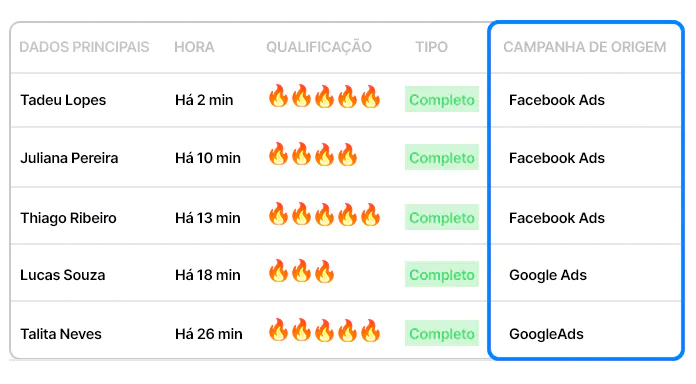
Not knowing what questions scare leads away
In a static Landing Page form, it is simply impossible to know what information visitors do not like to provide in your segment.
In fact, you can’t even know if it was the questions that scared off your leads. In these forms, you don’t have much data on user behavior other than converted , didn’t convert and page reading time .
One of the use cases for chatbots is the possibility of carrying out this analysis. You can know exactly which question your visitors stopped at. And then perform A/B testing to determine if these questions are the problem.
3 real success stories with Leadster
I think we’re reaching the end of our article 🥲
Don’t get me wrong: I could talk about chatbot use cases all day. But with the general examples and the problems that chatbots solve, we can already understand a lot together about how the tool works.
To conclude our conversation, however, we need to talk about real results. How do these chatbot use cases work to deliver more leads and more sales?
That’s what we’re going to find out now. Read on to learn about some of Leadster’s success stories!
Rafael Cassio Real Estate
- 113% increase in conversion;
- 20% increase in sales;
- 5,647 qualified leads with Leadster.
Imobiliária Rafael Cassio was founded by Rafael himself, a broker by profession. Since its founding, having an optimized website and working on digital marketing has always been its highest priority.
It operates on the north coast of Santa Catarina, more specifically in Balneário Piçarras. Today, it also has a headquarters in Gaspar.
He was already investing heavily in paid media and needed to increase his conversion rate, which was below the market average — he had 0.78%, while the market reached 1%.
And with Leadster, that’s exactly what he achieved. Their lead conversion increased by 113% after working with the chatbot, which resulted in a 20% increase in sales.
This increase came from all the factors we discussed throughout the text. Together we managed to generate more than just leads, but qualified leads. And that made all the difference in your business.
David Pinheiro and Appeal for Fines
- 287% increase in Conversion;
- 30% increase in sales;
- 16,878 leads generated with Leadster;
- 35% reduction in Cost per Lead.
David Pinheiro is a Marketing Consultant at SEO Agency — Your Online Company.
Back in 2020, he was approached by Appeal for Fines, a website specializing in automotive legal challenges.
At the time, the CPL (Cost per Lead) of the Resource was R$3.74. The value is not that high, but when there is no sale, even less than R$4.00 in CPL starts to trigger alerts in a sales team.
And there was another problem: during the pandemic, Appeal was unable to work properly. The Detran website was having problems and the services offered were restricted.
At the height of the pandemic, Leadster was fundamental in directing the leads that continued to arrive even with restricted services at Detran.
To avoid losing conversions, David and Recurso created flows that explained the situation and offered next steps.
Post-pandemic, we continued working with David and Recurso, generating much more qualified leads and with a 35% reduction in CPL, which became R$2.24.
Isaac Educational
- 25% increase in conversion
- 5,647 leads generated
Isaac Educacional is a startup focused on school management, more specifically for the financial department and tuition control.
And like any good startup focused on growth , Isaac Educacional needed to grow, and grow as quickly as possible.
Leadster was a key partner in this growth. In addition to the chatbot, which was already on Isaac’s radar, the integration with CRM HubSpot, Social Ads and Google Analytics was a big differentiator.
All of this resulted in more leads and a 25% increase in conversion rate. It is a work that we are very proud of to this day as it is an educational startup that changes the reality of schools throughout Brazil.
So, did you identify with any of the chatbots use cases?
Look how interesting: our last example, Isaac Educacional, has already shown growth during the free trial period, which only lasts 14 days.
Why don’t you do like them? Take the test and see if the results come. You can create your first flows today, with just a few clicks. Register and start your new life in lead generation 😉


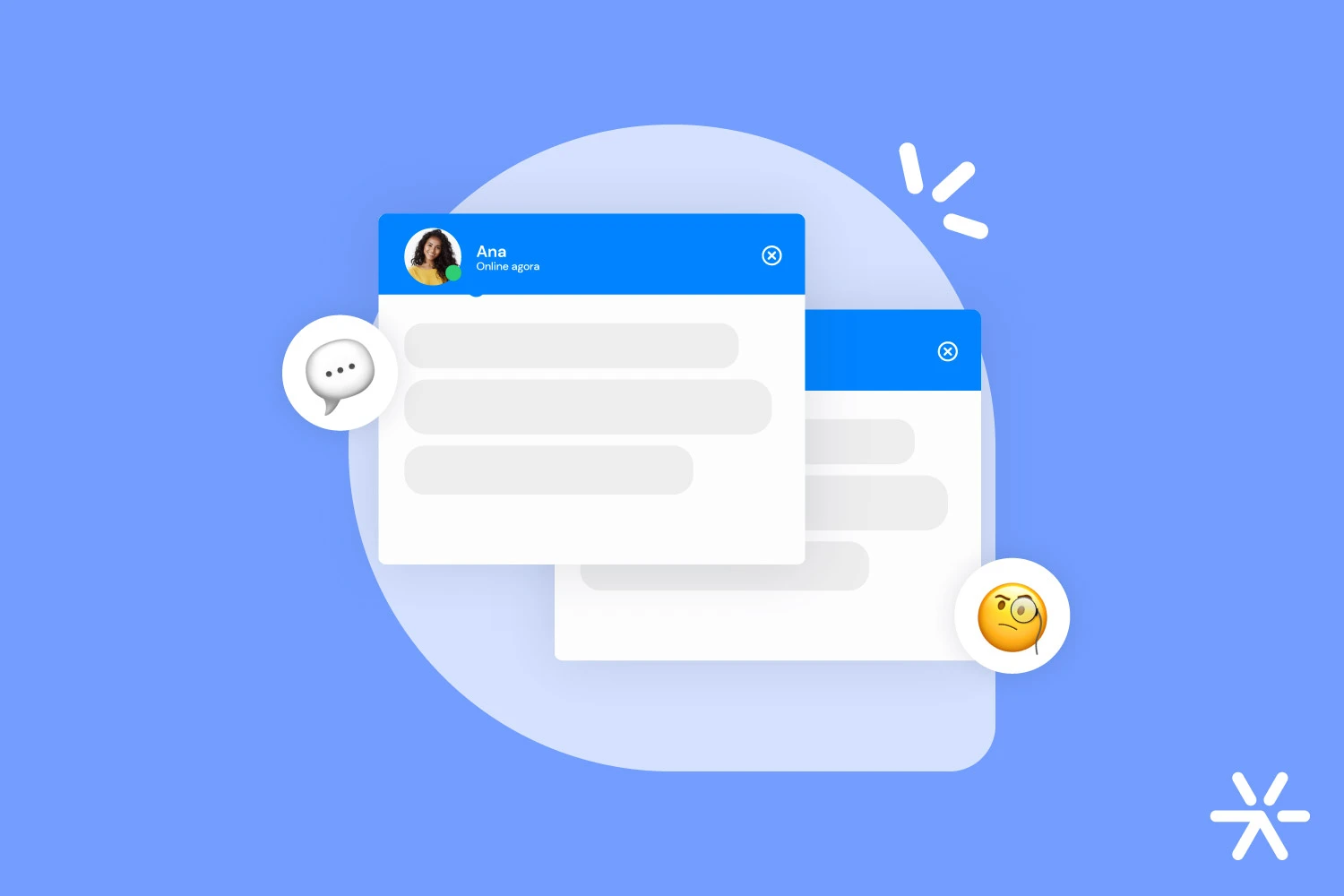

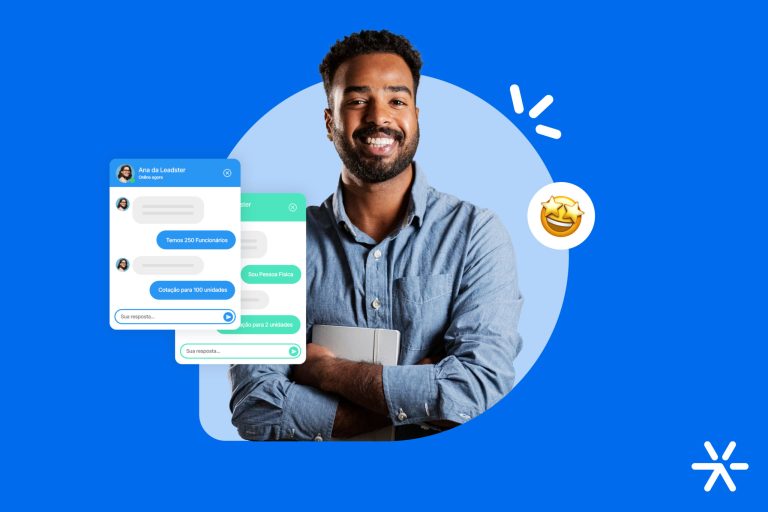
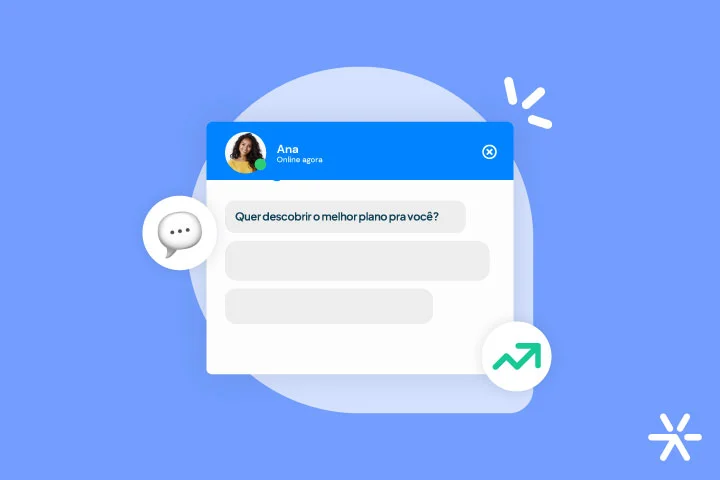
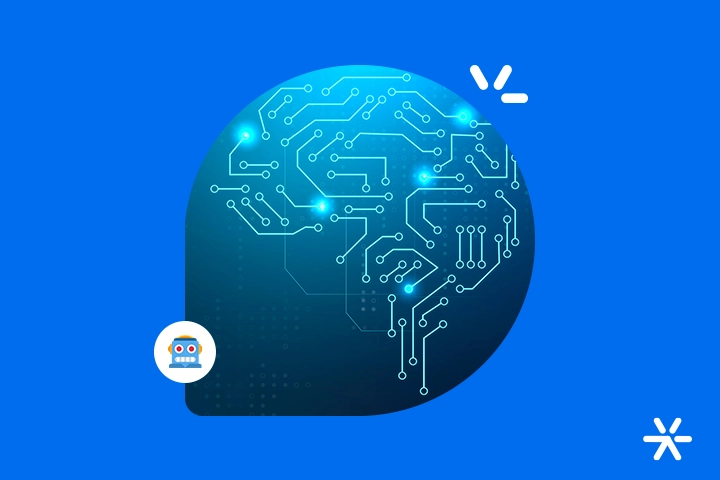
![[TOP 20] The Best Chatbots in the Market in 2024](https://getleadster.com/blog/wp-content/uploads/2024/07/Conheca-os-Melhores-Chatbots-de-Vendas-Atendimento-e-WhatsApp-para-usar-em-2022.webp)
